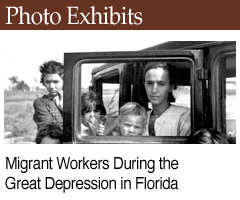A Guide to New Deal Records
at the State Archives of Florida
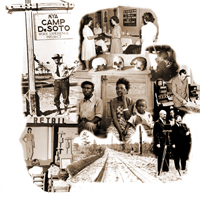
Collections by New Deal Agency
Federal Emergency Relief Administration (FERA)
The Federal Emergency Relief Administration, passed by Congress May 12, 1933, provided a half billion dollars in relief, disbursed through state and local relief agencies. New York relief worker Harry Hopkins headed the FERA, where he made waves when he spent $5 million in his first two hours on the job. Florida created the Federal Emergency Relief Administration, headed by Julius Stone, to distribute the Federal funds. The program was phased out in 1935 in favor of the Works Progress Administration (WPA).

Collections:
- RG 293 State Live Stock Sanitary Board
- S 1888 State Veterinarian tick eradication files, 1933-1951
- RG 402 Commissioner of Education
- S 1124 Superintendent of Public Instruction William S. Cawthon administrative files,1922-1937
- RG 440 Board of Regents
- S 1 Minutes, 1905 - 1997
- RG 510 Division of Recreation and Parks
- S 1351 Florida State Park surveys, 1934-1935
- RG 560 Canal Authority of the State of Florida
- S 1727 Subject files, 1930-1990
- RG 90000
- M90-3 Right of way acquisition registers 1935-1938
Public Works Administration (PWA)
Headed by Secretary of the Interior Harold Ickes, the Public Works Administration (PWA) was a work relief program set up in May 1933 as one of the New Deal’s earliest programs. Though not as well known as the WPA (which served as something of a rival organization), the PWA completed hundreds of large-scale projects in its own right. This included 70% of all new schools built in the U.S. between 1933 and 1939, 65% of all courthouses, 35% of the hospitals, plus slum clearance, government building erection and other major construction projects.
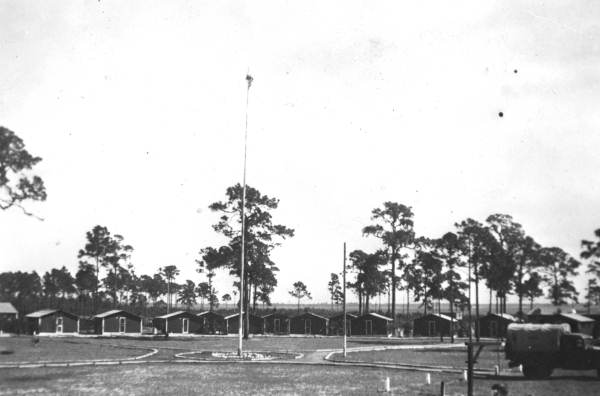
Collections:
- RG 590 Florida Construction program
- S 44 Construction site photographs, 1936
- S 238 Photographic plates, 1933-1938
- S 430 Ledger, 1935-1939
- S 450 Project files, 1933-1942
- S 546 Publicity Records, 1936-1937
- RG 900000 Manuscripts
- M87- 12 Architectural drawings of Capitol enlargement, 1936-7
- M82- 7 George Asbell Papers, 1914-1967
Civilian Conservation Corps (CCC)
By far the most popular of all New Deal programs was the Civilian Conservation Corps, the brainchild of Franklin D. Roosevelt, a devoted conservationist. He personally drew up the plans for the formation and organization of the agency. Begun in April 1933 as the Emergency Conservation Works, and headed by Robert Fechner (who coordinated the joint efforts of the Departments of War, Interior and Labor), it was also one of the first programs to operate in Florida. The Florida Board of Forestry was in charge of CCC operations for the state. The CCC was designed to conduct conservation work (such as reforestation, erosion prevention, park and dam construction, and fire prevention) while simultaneously providing education and training to thousands of young enrollees. The enrollees were paid $30 a month: the enrollees kept $5, and were required to send the rest home to their families. The most notable accomplishment for Florida by the CCC was the construction of the Florida Park Service, and the planting of thousands of trees.
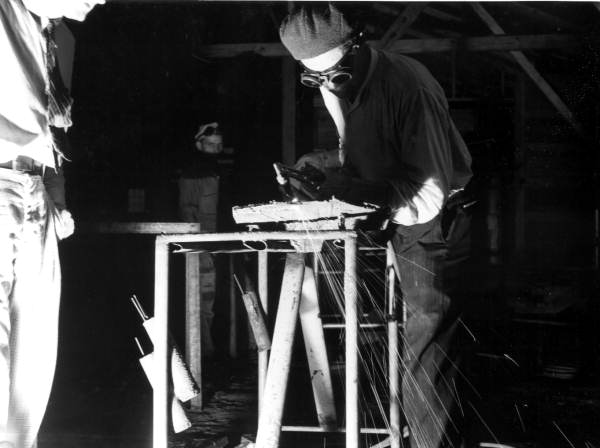
Collections:
- RG 155 Division of Historical Resources
- S 1270 Florida State Park project files, 1933-1942, 1988-9
- RG 200 Department of Agriculture
- S 1831 Florida Forest Service, program and project photographs, 1931-41
- RG 510 Division of Recreation and Parks
- S 1352 Florida Park Service project files, 1936-1948
- S 1919 Civilian Conservation Corps museum exhibit oral histories, 1990
- S 1943 Florida Park Service Director Emmet Hill's administrative files, 1936-1959 (bulk 1953-1958)
- S 1945 Florida Park Service Chief of Education and Information Charles H. Schaeffer's administrative and reference files, 1936-1959 (bulk 1954-1959)
- S 1951 Public relations and historical files, 1934-1964
- RG 550 Department of Environmental Protection
- S 1611 Plans for Florida Caverns State Park and other state parks, 1935
Civil Works Administration (CWA)
Harry Hopkins, head of the FERA and the future WPA, was worried whether many citizens would survive the winter of 1933-1934. So he convinced his friend President Roosevelt to create the Civil Works Administration (CWA) in order to offer work relief for the that winter. Though it lasted only a few months, this Federal work program (unlike the FERA in which funds were distributed through state agencies) had over four million workers on the payroll. By spring the PWA and FERA assumed many of its projects.
Collections:
- RG 293 State Sanitary livestock Board
- S 1888 State Veterinarian tick eradication files, 1933-1951
Works Progress Administration (WPA)
The start of the gargantuan Works Progress Administration (WPA)—a.k.a. Works Projects Administration—signaled the conversion from temporary relief efforts such as the FERA and CWA (even the PWA and CCC were meant to be only temporary originally) to long term reform. Headed by Harry Hopkins, the WPA was a massive work-relief program that ranged from conservation and work projects to cultural and historical endeavors. Begun in 1935, the WPA was active till the end of the New Deal in 1942.
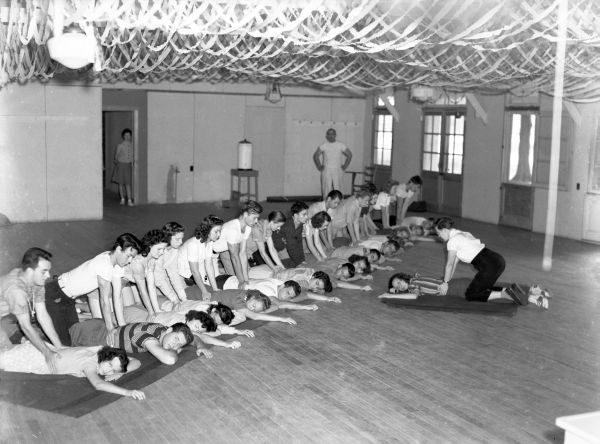
Collections:
- RG 158 Bureau of Folklife Programs. Florida Folklife Archive
- S 1576 Audio recordings of Florida Folk Festival performances and other folk events,1935-2001.
- S 1579 Indexes and accession registers to the audio tapes, video tapes, photos, and slides of the Florida Folklife Archive
- S 1583 WPA Federal Writers' Project Florida folklife files, 1935-1943
- S 1584 Stetson Kennedy donation records, 1936-1989
- S 1585 Stetson Kennedy Folklife collection, 1935-1991
- S 1629 Ralph Steele Boggs collection 1935-1941, 1982, 1986
- S 1728 Microfilm of Farm Security Administration photographs, 1936-1942
- RG 191 State Defense Council
- S 419 Subject Files, 1940-1946 (Box 56) Lots of photos
- RG 192 State Planning Board
- S 1653 Florida recreation facilities survey, 1938
- S 1655 Tax status and publicly owned land study, 1939-1940
- RG 198 State Library Board
- S 1505 State Librarian William T. Cash administrative files, 1927-1954
- S 1654 Statewide Library project papers, 1940-1941
- S 1935 Florida Historical Records Survey files, 1936-1938
- RG 293 State Sanitary livestock Board
- S 1888 State Veterinarian tick eradication files, 1933-1951
- RG 450 Florida State University
- S 1360 Doak S. Campbell administrative files,1941-1957
- RG 510 Division of Recreation and Parks
- S 1943 Florida Park Service Director Emmet Hill's administrative files, 1936-1959 (bulk 1953-1958)
- RG 90000
- M87- 9 Camp Roosevelt Project records, 1936-1942
- M97- 7 Commissioners minutes and ordinances, 1821-1899,1915
- M97- 8 Judicial organization information, 1845-1935
Farm Security Administration (FSA)
(FSA) was created in the Department of Agriculture in 1937. The FSA and its predecessor, the Resettlement Administration (RA), were New Deal programs designed to assist poor farmers during the Dust Bowl and the Great Depression. Roy Emerson Stryker was the head of a special photographic section in the RA and FSA from 1935-1942.
During its eight-year existence, the section created the 77,000 black-and-white documentary still photographs for which it is world-famous. Beginning in 1939, it also created 644 color documentary still photographs. The section's documentary project continued for one year after the unit moved to the Office of War Information in 1942.
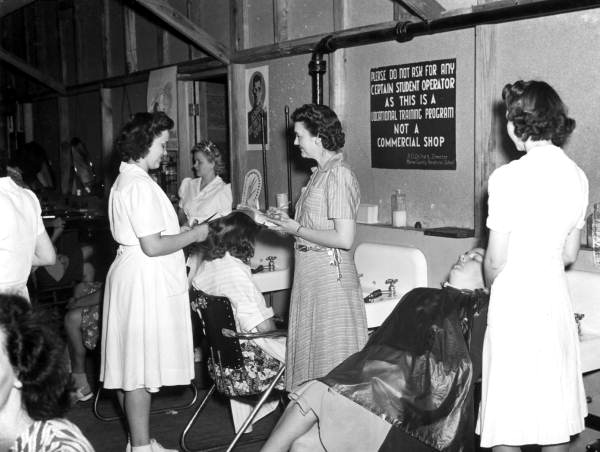
Collections:
- RG 158 Bureau of Florida Folklife Programs
- S 1728 Microfilm of Farm Security Administration photographs,1936-1942

 Listen: The Bluegrass & Old-Time Program
Listen: The Bluegrass & Old-Time Program
